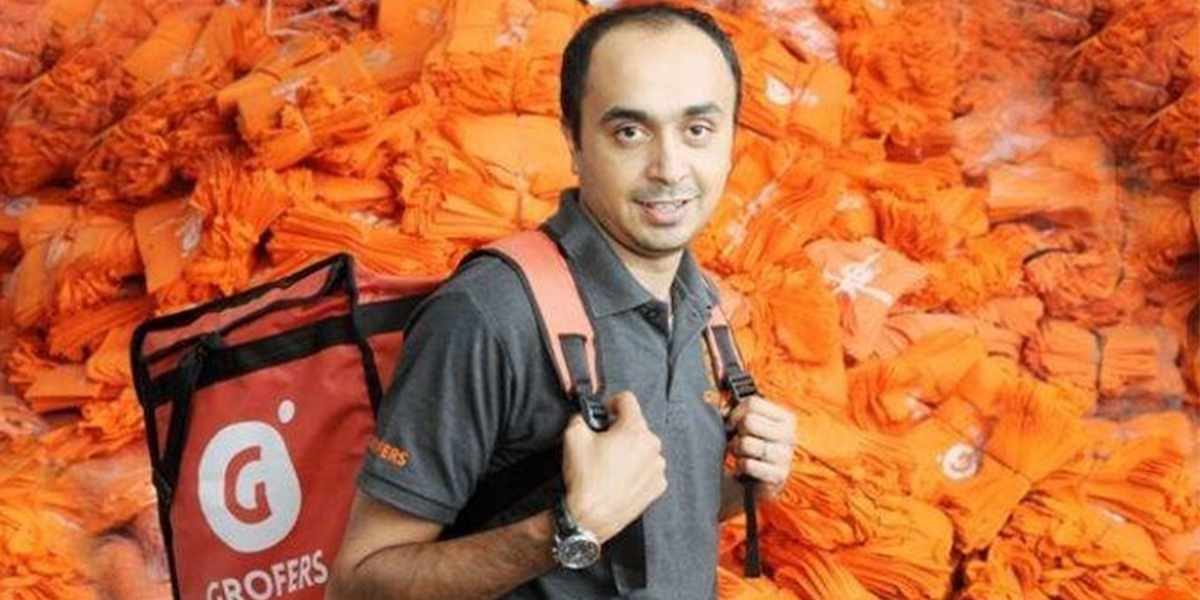Last year was painful for online grocery platform Grofers as the company shifted from marketplace to an inventory-led play. The growth had taken a nosedive for the online grocer from May till the February 2017.
“It was a frustrating period for us. While our investment towards sprucing up infrastructure was increasing, our growth remained in a negative,” says Albinder Dhindsa, CEO & Co-Founder, Grofers.
From marketplace to inventory: A painful transformation for Grofers
Besides pivoting from a marketplace model, it also scrapped 90 minutes delivery option. But, why? Dhindsa answers, “We didn’t see a path of profitability with 90 minutes delivery concept. It was causing significant burn and gradually we figured out that unit economics can’t we worked out with it.”
However, the Gurugram-based company has bounced back since then and has come a long way. “We have started witnessing growth from March this year and since then we have been maintaining 20 percent month-on-month growth,” says Dhindsa.
At the beginning of this year, Grofers was doing little over 5,000 orders a day. Now, according to Dhindsa, it does 30,000 orders on a daily basis.
Broken supply chain forced Grofers to evangelize inventory-led play
The major driver for moving from marketplace to inventory-based model was broken supply chain. “With marketplace model, we used to work with hyperlocal grocery stores (kiranawallas). But they were not capable to cater to customers’ demand. In most of the orders, we tend to miss some items as they weren’t available at stores. It was taking a toll on overall consumer experience,” says Dhindsa.
With marketplace model, Grofers had several dark stores within a city to fulfil orders. But for an inventory-led play, it had created large warehouses at outskirts of each city. “Recovering cost to replenish inventory at dark stores wasn’t feasible. Cost of refilling was very high,” adds Dhindsa.
From February onwards, it facilitates delivery via big warehouses strategically located outside of city limits.
Moving from dark stores within city to big warehouse on outskirts
Unlike last year when it used to fulfil orders on bikes, the Softbank-backed company now uses a fleet of Tata Ace and vans to facilitate delivery. On bikes, a rider used to carry four orders maximum while vans allow it to fulfil approx 35 orders at one time.
From a cost perspective, it’s almost same (delivery via bike and vans). Ensuring delivery through bike requires dark stores across prime locations in a city whereas delivery from vans can be done easily. “Moving smaller facilities from cities helped us to reduce cost,” says Dhindsa.
Currently, the company has 23 warehouses including 7 in Delhi (NCR), one big facility in Bengaluru accompanied by two small ones. Mumbai and Kolkata have a big warehouse each while large-scaled facility centres for perishables (fruit and vegetables) are strategically established in districts (such as Manchar in Maharashtra and Gopalpura in Haryana) with high and quality produce.
“Our fulfilment rate is above 99.8 percent,” adds Dhindsa. In past, Grofers used to source fruit and vegetables from mandis (like Azadpur in Delhi), however, from February onwards it started sourcing directly from farmers.
Grofers sets to touch Rs 100 crore monthly sales
At present, Grofers claims to have 30 percent market share of online grocery retail. It’s rival Bigbasket commands over 50 percent market share. “We have crossed Rs 72 crore in sales (not GMV) last month and plans to hit Rs 100 crore monthly run rate by the end of the current fiscal,” says Albinder.
In contrast to the last year, Average order Basket size (AOB) has increased from Rs 750 to 1,300 this year.
Grofers after mass market while Bigbasket caters to premium
“Bigbasket is primarily catering to premium customers while we are going after mass market,” says Dhindsa. Unlike Bigbasket, Grofers is building high frequency with low average basket size.
“We are trying to build DMart kind of model in online space,” adds Dhindsa. Grofers keeps inventory for more than 10 days while Bigbasket holds inventory for about four weeks.
How will Grofers compete with likes of Amazon and Flipkart?
Amazon had entered grocer space almost two years ago while Flipkart has just started testing grocery in Bengaluru again. These two are behemoths with very deep pockets, however, Dhindsa seems undeterred by them. “Grocery is an altogether different ball game. It has very strong regional affiliation which we understand better than both,” says Dhindsa.
For Grofers, Delhi (NCR) contributes 50 percent of its overall volume. “We have a lead in Delhi while Bigbasket has in Bengaluru. On the other hand, Flipkart is currently only focusing on Bengaluru. It is slated to give stiff competition to Bigbasket in Bengaluru,” adds Dhindsa.
According to Dhindsa, sluggish growth of online shoppers base over the past couple of years is forcing horizontal players to launch grocery. When asked about strategy for countering Amazon Now, he adds, “Amazon Now is in the market for two years but it’s yet to gain traction so that we consider them as a competition.”
More women are buying on Grofers
Grofers had about 80% men transacting on the platform last year, however, it has undergone paradigm shift as now more than 55% women transact on it.
“Last year when we started next day delivery and became more grocery-focused about 60% transacting base consist of men. Things changed after Jio started dominating the cellular market. Essentially, it has given the second smartphone in a household with an unlimited data plan. This made housewives to shop more at Grofers,” concludes Dhindsa.
Grofers: Website














